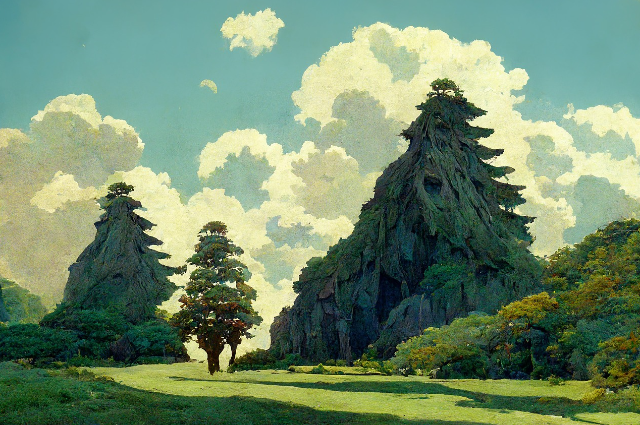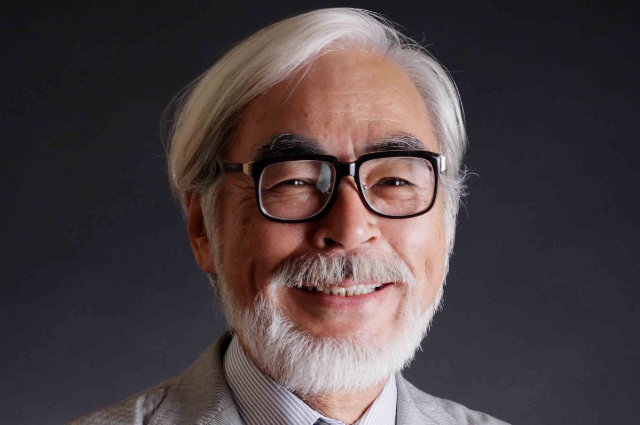
Image by hok from Pixabay
A New Way to Experience Studio Ghibli’s Magic
Fans of Studio Ghibli, the legendary Japanese animation studio known for masterpieces like Spirited Away and My Neighbour Totoro, recently discovered an exciting new feature in artificial intelligence. A new version of ChatGPT now allows users to convert personal photos and popular internet memes into the signature artistic style of Hayao Miyazaki, the studio’s founder. This innovation thrilled many fans, who enjoyed seeing their images transformed into Ghibli-like animations. However, while the technology offered creative possibilities, it also raised ethical concerns about AI’s use of copyrighted artistic styles and its potential impact on human artists.
Ethical Concerns in AI-Generated Art
Miyazaki, now 84, has long been known for his intricate hand-drawn animations and whimsical storytelling. He has also been vocal about his doubts regarding artificial intelligence in animation. The growing popularity of AI tools trained on existing copyrighted works has led to debates about whether they threaten the livelihoods of human artists. Many question whether AI should be allowed to replicate unique artistic styles without permission from the original creators.
Personalizing Ghibli-Inspired Art
For many users, these concerns were secondary to their enthusiasm for the AI’s capabilities. One such user, Janu Lingeswaran, a businessman from Aachen, Germany, experimented with the tool by uploading a picture of his three-year-old ragdoll cat, Mali. Within moments, the AI generated an anime-style image that captured the essence of Mali while also resembling the carefully crafted feline characters from classic Ghibli films like Kiki’s Delivery Service and My Neighbor Totoro. Lingeswaran was so impressed with the result that he considered printing and framing the image for his home.
Other users used the tool to transform well-known images into Ghibli-style artwork. Examples included an iconic picture of Turkish pistol shooter Yusuf Dikec in a casual T-shirt on his way to winning a silver medal at the 2024 Olympics. Another widely shared transformation was of the famous “Disaster Girl” meme, in which a four-year-old smirks at the camera while a house fire rages behind her. These playful experiments demonstrated AI’s ability to blend real-life images with beloved animation aesthetics, leading to widespread sharing on social media.
OpenAI’s Response and Legal Implications
OpenAI, the company behind ChatGPT, has been dealing with legal battles over copyright concerns. Despite these challenges, OpenAI encouraged the “Ghiblification” trend. CEO Sam Altman even updated his social media profile with a Ghibli-style version of his portrait. In a recent technical report, OpenAI stated that it was implementing a “conservative approach” to AI-generated art, ensuring that its tools do not directly replicate the styles of living artists. The company emphasized that while it restricts AI from mimicking individual artists, it allows broader studio styles by enabling users to create Ghibli-inspired artwork for personal enjoyment.
Studio Ghibli’s Silence and Miyazaki’s Disapproval
Studio Ghibli has yet to release an official statement regarding the AI trend. The studio, along with its North American distributor, has not responded to media inquiries on the topic. However, as discussions about AI-generated Ghibli art gained traction online, past remarks by Miyazaki on AI resurfaced.
In a 2016 documentary, Miyazaki was shown an AI-generated animation of a writhing, crawling creature. The demonstrator explained that AI could create unsettling movements beyond human imagination, which could be useful for horror animations like zombies. Miyazaki’s reaction was one of strong disapproval. He recalled a disabled friend who struggles with movement and expressed his deep discomfort with the AI-generated imagery, saying, “Whoever creates this stuff has no idea what pain is.” He concluded firmly that he had no desire to incorporate AI into his work.
The Future of AI and Artistic Integrity
As AI technology continues to evolve, it presents both exciting opportunities and ethical dilemmas for the creative industry. While AI-generated Ghibli-style art offers a fun and accessible way for fans to engage with their favourite animation aesthetic, it also raises serious questions about artistic ownership and the role of human creativity. As discussions around AI and copyright unfold, the challenge will be balancing innovation with respect for the original artists who have shaped the world of animation.
A Strong Reaction to AI’s Use of Ghibli’s Style
Hayao Miyazaki has been vocal about his disapproval of artificial intelligence in animation. He once stated, “I strongly feel that this is an insult to life itself,” emphasizing his deep concerns about AI-generated art. His sentiment resonates with many artists and legal experts who question the ethical and legal implications of AI replicating established artistic styles.
Legal Concerns: Was Ghibli’s Work Used Without Permission?
Josh Weigensberg, a legal expert and partner at Pryor Cashman, highlighted a crucial question regarding the AI-generated Ghibli-style art. He pointed out that it is important to determine whether OpenAI’s model was trained using Miyazaki or Studio Ghibli’s work. If so, the next question is whether OpenAI had the legal rights or licenses to use those works in training the AI.
OpenAI did not respond to inquiries regarding whether it had obtained a license for this purpose. Weigensberg noted that if the training process involved legally acquired material, the company might have grounds to use it. However, if the AI was trained without consent or compensation to the original creators, it raises serious ethical and legal concerns.
Is Artistic Style Protected Under Copyright Law?
There is an ongoing debate about whether an artist’s style can be copyrighted. Weigensberg explained that, from a broad legal perspective, artistic “style” itself is not protected by copyright law. However, he added that certain identifiable elements within an artwork—such as character designs, backgrounds, or unique visual motifs—could be considered copyrightable.
To illustrate this point, he referenced Miyazaki’s films like Howl’s Moving Castle and Spirited Away, explaining that if one were to pause a frame from these movies, specific artistic elements could be directly compared to AI-generated images. If the AI outputs nearly identical or substantially similar designs, it could present a potential copyright violation. This suggests that the argument cannot simply end with “style isn’t copyrightable”—a deeper analysis is necessary.
. . .
References:

